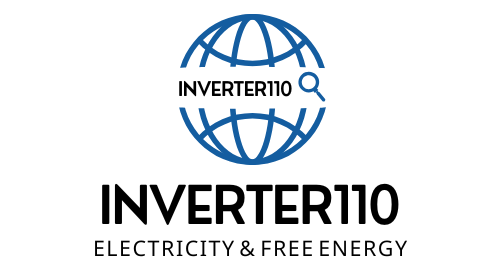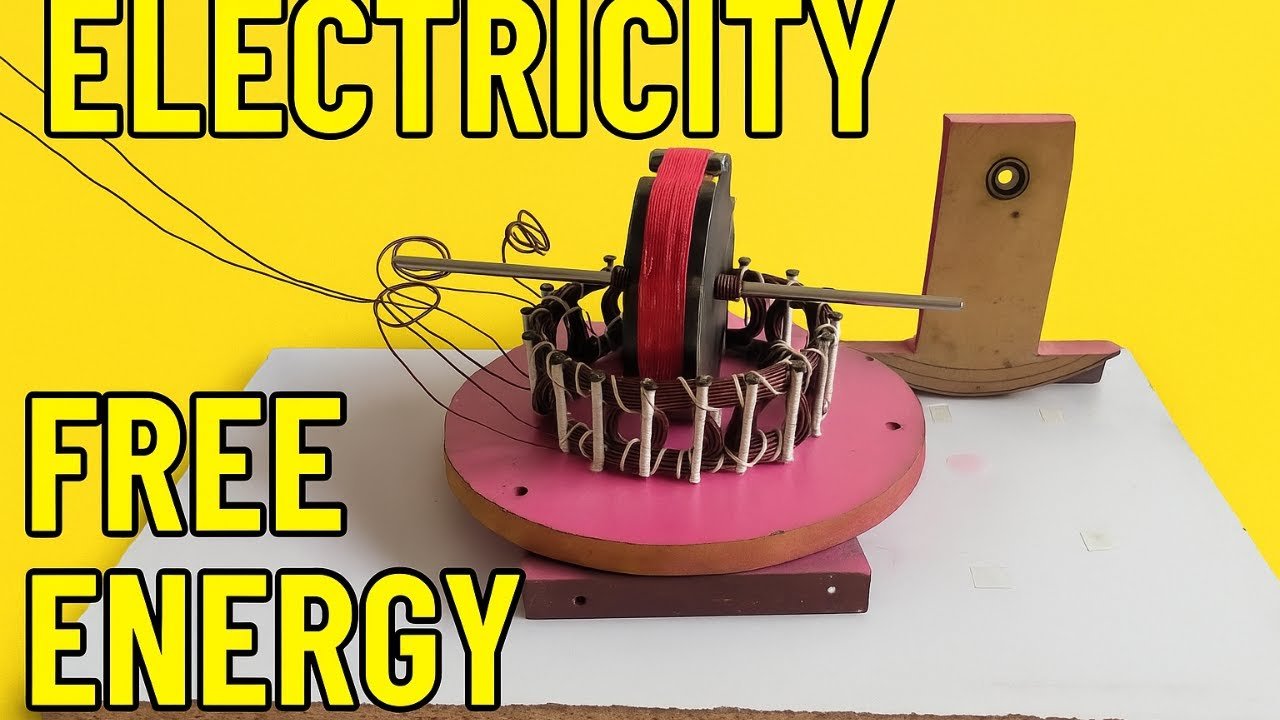How to Make Three Phase Electricity Generator & Free Energy Experiment Using 6 Black Magnets, 19 No Wire, Wooden Plates and More
Introduction
In today’s world of rising energy costs and environmental concerns, the idea of building your own free energy generator has captured the imagination of inventors, students, and DIY enthusiasts. While large-scale power generation requires advanced engineering, you can still experiment with simple designs at home to understand how three phase electricity is generated.
In this guide, we’ll explore a DIY free energy experiment using 6 black magnets, 19-gauge copper wire, wooden plates, and other simple tools. This project is educational, experimental, and a great way to learn the fundamentals of electricity production.
What is a Three Phase Electricity Generator?
Three phase electricity is the most common method of power generation used worldwide. Unlike single phase, where electricity flows through one wire, a three phase generator produces three alternating currents that are evenly spaced in phase (120° apart). This makes the power supply:
More efficient – Delivers constant power flow.
Stable – Reduces vibrations in motors.
Reliable – Used in industries and large-scale applications.
Our DIY project won’t power a whole house, but it will demonstrate how three phase electricity can be generated using magnets and coils.
Materials Required
Before starting, gather the following materials:
1. Magnets (6 Black Magnets)
Strong permanent magnets are the core of the generator.
They create the magnetic field that interacts with copper coils to induce electricity.
In our setup, 6 ferrite or neodymium black magnets will be placed on a rotating disc.
2. Copper Wire (19 Gauge Wire)
We’ll use 19 SWG (Standard Wire Gauge) enameled copper wire for winding the coils.
Thicker wire = higher current capacity.
Coils will be wound carefully on wooden plates.
3. Wooden Plates
Serve as the base and support structure.
Insulating, easy to cut, and non-magnetic.
Used to mount magnets and coils securely.
4. Rotating Disc or Rotor
Can be made from wood or acrylic.
Holds magnets in place.
Connected to a shaft for manual or motor-driven rotation.
5. Bearings & Shaft
Bearings reduce friction for smooth rotor motion.
Shaft allows the rotor to spin freely.
6. Iron Core (Optional)
Small iron or steel rods can be inserted inside coils to increase magnetic flux.
7. Basic Tools
Drill machine
Hot glue or epoxy
Screwdriver & screws
Soldering kit
Multimeter for testing
Step-by-Step Construction
Step 1: Preparing the Wooden Base
Cut a strong wooden plate for the base.
Drill holes for mounting coils and shaft bearings.
Ensure the surface is flat and stable.
Step 2: Mounting the Magnets on the Rotor
Arrange the 6 black magnets on the circular disc at equal distances.
Polarity must alternate (North-South-North-South).
Fix them using epoxy or strong adhesive.
This will become your rotor.
Step 3: Making the Coils
Take 19 gauge copper wire and wind it around a wooden mold or bobbin.
Each coil should have 100–150 turns (depending on experiment).
Make at least 3 identical coils for three phase output.
Fix coils securely on wooden plates.
Step 4: Positioning the Coils
Place the three coils evenly (120° apart) around the rotor.
Ensure a small air gap between magnets and coils.
Use screws to mount them firmly.
Step 5: Connecting the Coils
For three phase output, connect the coils in a star (Y) connection.
Bring out three wires (phase A, B, C) plus one neutral (optional).
Step 6: Assembling the Generator
Attach the rotor disc to the shaft with bearings.
Position it above the coils so magnets pass directly over them.
Secure everything tightly.
Step 7: Testing the Generator
Rotate the rotor by hand or with a small motor.
Use a multimeter to measure AC voltage from the coil outputs.
Faster rotation = higher voltage.
How the Free Energy Experiment Works
The principle behind this DIY generator is Faraday’s Law of Electromagnetic Induction:
“Whenever a conductor (wire coil) is exposed to a changing magnetic field, an electric current is induced.”
Here’s what happens:
The rotor with 6 magnets spins over the stationary coils.
Magnetic flux cuts across the copper wire turns.
This induces alternating current (AC) in each coil.
Because the coils are placed 120° apart, they produce three separate AC outputs → three phase electricity.
Safety Precautions
Handle magnets carefully – they can snap together with force.
Ensure proper insulation of wires to prevent short circuits.
Do not connect directly to household appliances – this is only for educational purposes.
Keep water and moisture away from electrical setups.
Applications of This Experiment
Educational Projects – Great for students learning about generators.
Science Fair Demonstrations – Impressive working model.
DIY Hobby Experiments – Explore free energy concepts.
Small-Scale Lighting – Power LEDs or small bulbs with rectifier + capacitor.
Advantages
Simple and inexpensive design.
Demonstrates real-world three phase generation.
Eco-friendly experiment (no fuel needed).
Scalable for bigger projects.
Limitations
Cannot produce high power for household use.
Efficiency is low compared to professional alternators.
Requires precise balancing of magnets and coils.
Conclusion
Building a three phase electricity generator with 6 black magnets, 19 gauge wire, and wooden plates is an exciting way to learn about free energy experiments. While it won’t replace your grid electricity, it’s a valuable project for understanding how magnets and coils work together to produce AC power.
If you’re passionate about DIY projects, this experiment will inspire you to explore larger designs and alternative energy solutions.
How To Make Three Phase Electricity Generator | Free Energy Experiment
FAQs About Three Phase Free Energy Generator
| Frequently Asked Questions | Answers |
|---|---|
| 1. What is a three phase electricity generator? | A device that produces alternating current (AC) in three separate phases, spaced 120° apart, making power more stable and efficient. |
| 2. Can I really build a generator using magnets and coils? | Yes, you can build a small experimental generator for learning purposes, but it won’t power your entire home. |
| 3. Why use 6 black magnets? | Six magnets provide balanced magnetic flux and allow smooth rotation while maintaining efficiency in a small design. |
| 4. What type of wire is used in this project? | 19 SWG (Standard Wire Gauge) copper wire is used for winding coils to generate electricity. |
| 5. Why are wooden plates used? | Wood is a non-magnetic and insulating material, making it safe and easy to mount coils and magnets. |
| 6. Can I use neodymium magnets instead of ferrite? | Yes, neodymium magnets are stronger and will increase power output, but they must be handled carefully. |
| 7. How many turns should each coil have? | Each coil should have around 100–150 turns of 19 SWG copper wire for effective generation. |
| 8. What is the principle behind this experiment? | It works on Faraday’s Law of Electromagnetic Induction: a changing magnetic field induces current in a conductor. |
| 9. What is the output voltage of this generator? | The output depends on the speed of rotation, coil turns, and magnet strength. Typically a few volts to tens of volts AC. |
| 10. Can this generator run household appliances? | No, it is meant for small-scale experiments and cannot handle high power loads. |
| 11. What can I power with this DIY generator? | You can light small LEDs, charge small batteries (with rectifier), or run low-power electronics. |
| 12. Is it safe to use? | Yes, if handled properly. Avoid connecting directly to home wiring and keep away from moisture. |
| 13. How do I test the output? | Use a digital multimeter set to AC voltage mode and measure across the coil outputs. |
| 14. Do I need an iron core inside the coils? | It is optional. Adding an iron core increases magnetic flux and improves voltage output. |
| 15. What is the difference between star and delta connection? | Star (Y) provides higher voltage but lower current, while delta gives higher current but lower voltage. |
| 16. Can I rotate the rotor by hand? | Yes, rotating by hand will produce small voltage, but a motor-driven setup gives better results. |
| 17. How many coils are needed for three phase? | You need at least three coils spaced 120° apart to generate three phase electricity. |
| 18. Why space coils at 120° apart? | This spacing ensures that each coil generates power at a different phase angle, creating balanced three phase electricity. |
| 19. Can I scale up this project? | Yes, using more magnets, bigger coils, and faster rotation can scale the output, but requires precision design. |
| 20. What speed should the rotor spin? | Higher speed produces higher voltage. Typically, a few hundred RPMs are required for noticeable output. |
| 21. Do I need a rectifier for DC output? | Yes, a bridge rectifier is needed if you want to convert AC output into DC for charging batteries. |
| 22. Can children try this experiment? | Yes, but only under adult supervision since magnets and wires can be hazardous if mishandled. |
| 23. How much will it cost to build? | The cost is low, usually under $30–50 depending on material availability. |
| 24. Can I use plastic instead of wood? | Yes, acrylic or plastic sheets can also be used, but wood is easier for DIY cutting and drilling. |
| 25. Will the generator produce constant power? | No, the output varies with the rotor speed. A voltage regulator is required for stable supply. |
| 26. Can I use this generator in a wind turbine? | Yes, with modifications, it can be mounted on a windmill shaft to generate small amounts of wind power. |
| 27. What is the role of bearings in this project? | Bearings reduce friction and allow the rotor to spin freely, improving efficiency. |
| 28. What safety gear should I use? | Wear gloves while handling magnets and goggles while drilling or soldering. |
| 29. How can I increase efficiency? | Use stronger magnets, increase coil turns, and reduce air gap between magnets and coils. |
| 30. Is this really free energy? | It demonstrates the concept of energy generation from magnets and coils, but it still requires mechanical input (manual rotation, motor, or wind power). |

